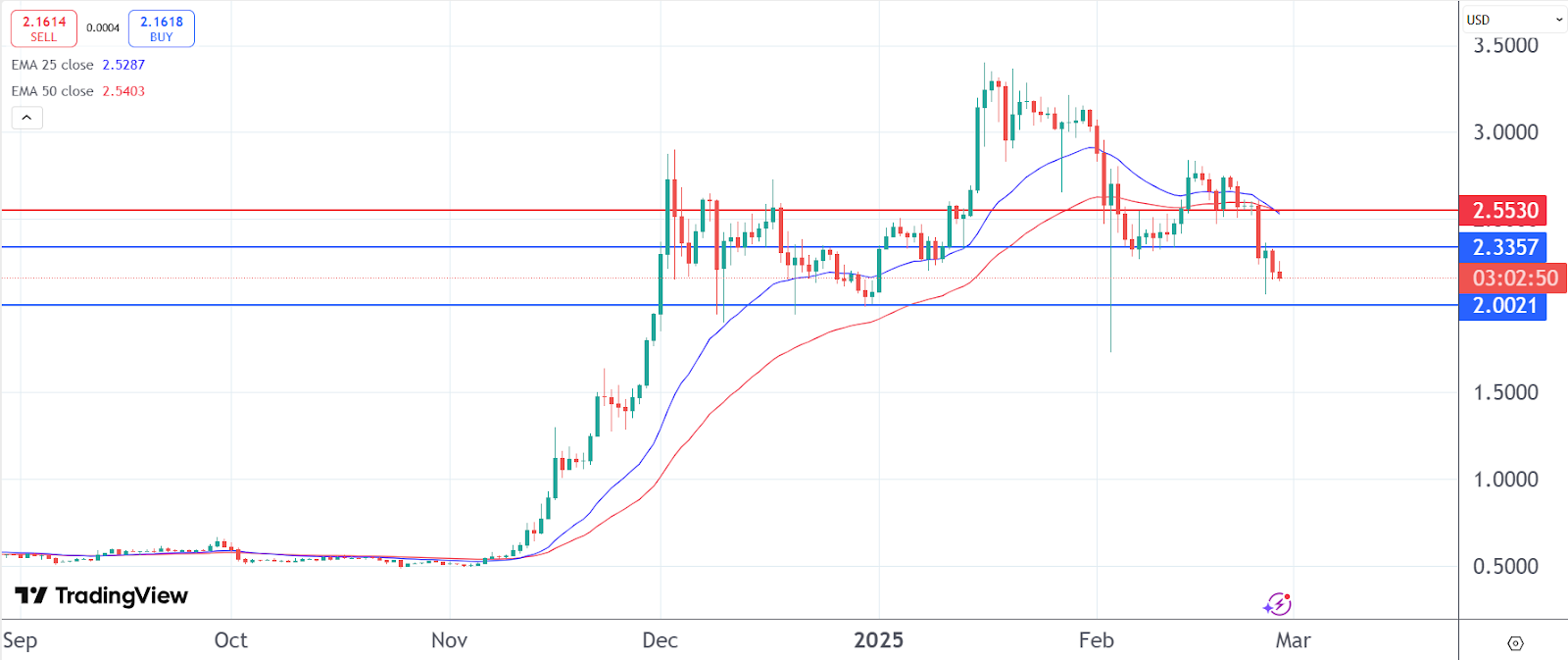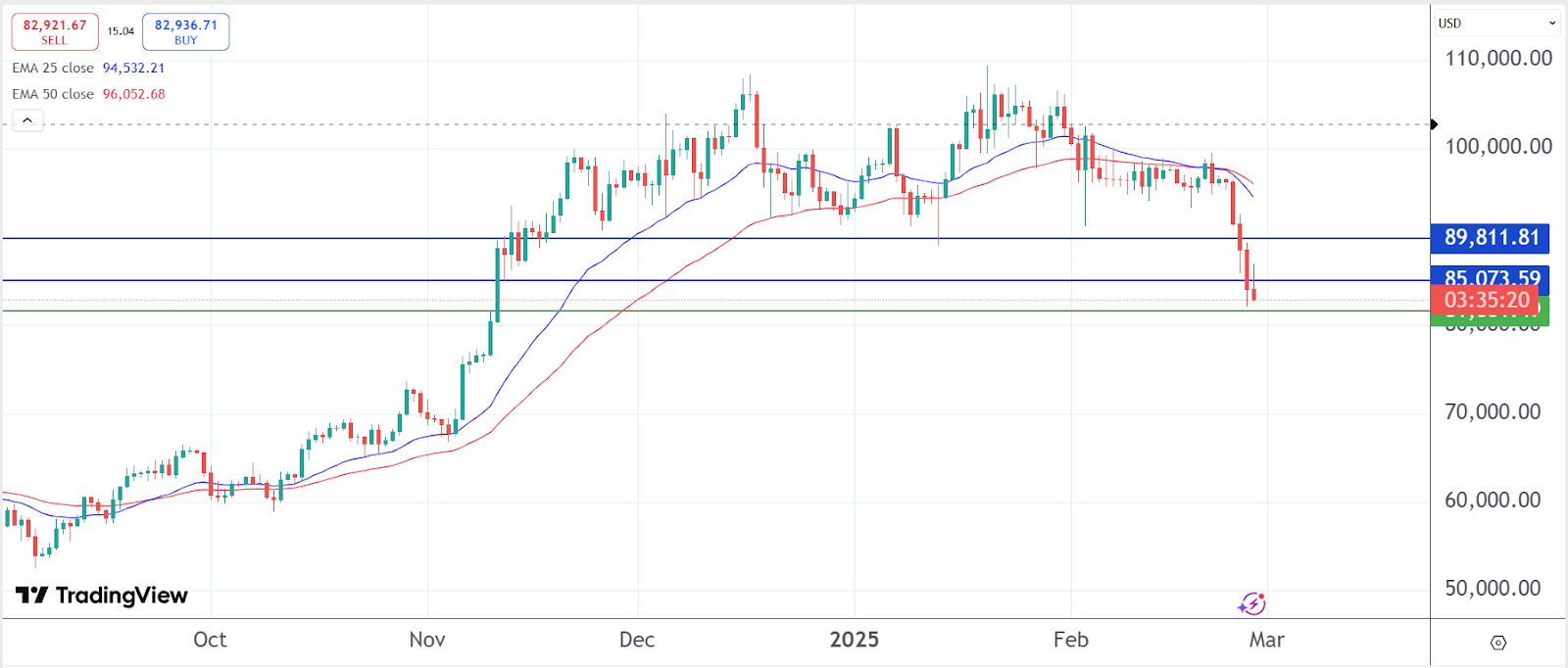- DeFi growth expected to gather steam with projections that its revenue could hit $376.9M in 2025.
- Autonomous Agents are expected to play a crucial role in the growth of the DeFi ecosystem.
- Autonomous agents execute trades fast, operate 24/7, and adapt to markets.
Navigating the DeFi realm has become increasingly more sophisticated in recent years replete with a large number of protocols, chains, and strategies.
The DeFi market projected to generate a revenue of $376.9 million by 2025 seeing that its TVL hit $138 billion this past December. As the market grows, the scale of potential opportunities on offer is matched only by the cognitive demands placed on its participants.
This has created a perfect storm for automated trading tools to enter the fray, helping allay many of the human limitations currently permeating this sector. For instance, these tools are capable of executing trades in seconds or milliseconds, an aspect crucial in volatile markets where timing can mean the difference between booking a major profit or loss.
Perhaps more importantly, these entities can operate continuously, allowing participation in a global market that never sleeps. Lastly, by eliminating emotional decision-making and adhering to predefined strategies, they can enhance both profitability and risk management by a huge margin.
Looking beyond basic automation
Historically speaking, one can see that the first generation of DeFi automation tools focused primarily on simple task execution, i.e. basic trading bots that followed predetermined rules and yield optimizers that automatically moved funds between protocols based on static parameters.
While these tools were undoubtedly resourceful, providing users value in the form of time savings and consistency, they lacked the intelligence to adapt to rapidly changing market conditions or execute truly sophisticated cross-protocol strategies.
Following this there was the advent of yield optimizers (like Yearn Finance) that helped pioneer the automation of capital allocation across lending protocols, automatically moving funds to maximize returns. Subsequently, trading tools evolved from simple grid and arbitrage strategies to more complex algorithms incorporating technical indicators.
That being said, these solutions still required significant user oversight, and technical knowledge to configure effectively — alongside frequent manual adjustments to respond to changing market conditions.
Most recently, the market’s innovation has resulted in the birth of ‘Xenocognitive’ finance tools whose utility, as suggested by their name, extends beyond human cognitive limitations while preserving user sovereignty. At the forefront of this technological realm stands Giza.
Unlike basic automation offerings that execute simple predefined tasks, Giza’s autonomous agents continuously analyze market conditions across protocols, allowing clients to execute complex yield strategies, and adapt to changing conditions without requiring any external intervention.
At the heart of Giza’s approach lies ARMA, its first autonomous agent. With thousands of user-controlled agents managing substantial sums of money across different lending protocols, ARMA offers up a vision of how purpose-built DeFi intelligence — with its verifiable decision-making patterns — can deliver market-leading yields while maintaining complete security and user sovereignty.
Features galore. Here’s what’s on offer!
From the outside looking in, Giza’s architecture addresses many of the core challenges associated with agent-driven finance using three integrated components. The ‘semantic abstraction layer,’ for instance, transforms complex protocol interactions into standardized operations that agents can naturally reason about and execute, enabling sophisticated cross-protocol strategies without requiring protocol-specific interfaces.
Similarly, the ‘agent authorization layer’ builds on the platform’s smart account infrastructure to enable non-custodial agent operations using a granular permission management module. As a result, users can maintain complete control of their assets while granting agents specific operational authority through session keys and programmable authorization policies.
Working alongside these interfaces is Giza’s ‘decentralized execution layer’ which provides the system with crypto-economic guarantees — thanks, in large part, to its integration with EigenLayer which allows network operators to stake native GIZA tokens as collateral.
All of this creates quantifiable costs for malicious behavior while incentivizing correct execution through protocol rewards. Not only that, by making use of this comprehensive framework, autonomous agents can bypass pervading cognitive barriers and eventually unlock sophisticated strategy participation across protocols that would otherwise be impossible for human operators.
The result is systemic market improvements ranging from enhanced capital efficiency to improved price discovery to reduced systemic risk (through atomic distribution of strategies).
The autonomous future of financial markets
A quick look at some of the numbers available online, one can see that the growth trajectory for automated trading tools seems to be quite exponential, with one report expecting the crypto trading bot market to reach $41.61 billion by 2033.
This expansion seems primed to be fueled by advancements in AI and ML that can enable systems to analyze vast amounts of data, predict market trends, and execute sophisticated strategies at unprecedented speeds.
Therefore, as these technologies mature, the boundary between automation and true market intelligence will most likely continue to blur, reshaping how individuals and institutions engage with digital assets. Amidst this, agent-driven platforms like Giza stand to reshape the DeFi trading paradigm by operating as an extension of human intent.
The post Autonomous agents and their growing role in fostering a better DeFi economy appeared first on CoinJournal.


